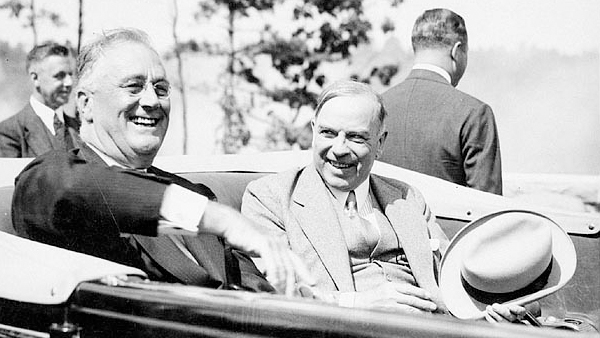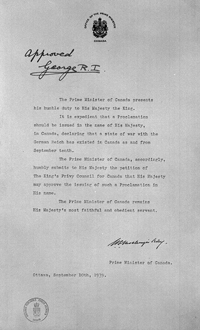King: The Wartime Leader
Laurier House National Historic Site

Roosevelt and King opening The 1000 Islands International Bridge 1938
© National Archives of Canada / Turofsky PA -052501
At no time were King's leadership skills more apparent than when he faced the challenge of leading the country through the Second World War. Under King, Canada became a modern industrial nation in the fullest sense, making a contribution to the war effort that taxed the country's resources to the limit. Because of the scale of Canada's involvement in the war, King was able to demand a larger voice for his country in international affairs. This level of influence was particularly obvious in the growing connection between Canada and the United States, a result of the close relationship that developed between King and President Roosevelt. The issue of conscription during the First World War had divided the country and the Liberal Party. King's handling of the issue was masterly and he achieved his goal of full Canadian participation in the war effort without splitting the nation.

Declaration of War against German Third Reich, September 10 1939. Please click on the Declaration of War to read its details.
© National Archives of Canada / c-140955
1939 to 1945 and the years of reconstruction that followed changed Canada. For the average Canadian, the King legacy that has affected them most was the beginning of the welfare state, a new concept for Canadians, that meant the irrevocable enlargement of the role of government in their everyday lives.
It is a testimony to King's accomplishments that, when he retired from office in 1948 he passed on to his successor, Louis St. Laurent, a united country with a solid foundation for future growth.
Related links
- Date modified :